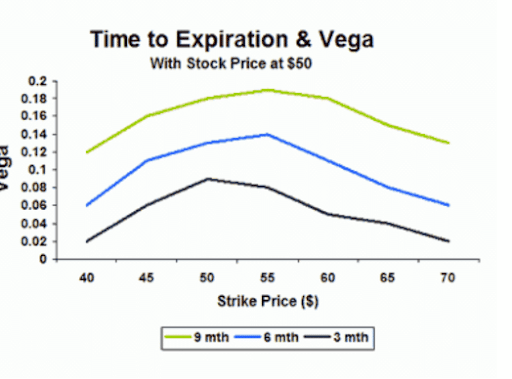Unlock The Next Level Of Options Trading With THIS
Share

I’m stating the obvious when I say the markets (yes plural) currency, commodity, bonds and stocks have been extremely volatile as of late.
This has led my students and I to apply strategies such as ratio spreads and unbalanced iron condors to benefit from the pumped up premiums. It takes a bit more hands on active management, however, one needs to adapt to market conditions.
And so far it has been worth it. Options360 keeps grinding higher, now up 22.3%. This compares quite nicely to the SPDR S&P 500 (SPX) being down 25% for the year to date.
To see how Options360 beats the market each and every year, click here!
But, back to today’s topic.
What do we mean when we discuss volatility or the Greek term Vega?
Options traders sometimes use these terms interchangeably, and while they are related, they are two distinct concepts.
Volatility is one of the five inputs used in the basic Black-Scholes options pricing model.
Higher volatility means higher option prices. That’s because higher volatility means greater expected price swings.
So it follows that stocks like Netflix (NFLX) and Meta (META) have higher volatility readings, and therefore, higher-priced options than more stable companies like Apple (AAPL) or JP Morgan (JPM).
Take a look at this table:
Despite Apple having a higher underlying stock price than Netflix, its at-the-money May call is actually much lower in price than Netflix.
And note that both JP Morgan and Meta are trading around $60, but the latter’s call is nearly five times the price.
This is almost entirely due to the differences in implied volatility (IV). This is because Facebook –sorry, Meta– is far more likely to make a huge move after earnings than JP Morgan.
Last quarter provided a perfect example of this. Facebook rose 14% in one day after reporting earnings. JP Morgan moved just 0.1%.
Vega, on the other hand, isolates how a change in IV will impact an option’s price by estimating how much its value changes when IV moves 1%.
Vega is highest for at-the-money strikes and increases as you go out in time. Notice also that peak Vega also moves slightly out of the money as you go out in time. This is because the probability of a given price move occurring increases as the time frame is extended.
For example, if you’re speculating on a $10 price move, you have more of a chance of being right if you have a six-month time frame rather than a one-month time frame.
A directional calendar spread, in which one buys a later-dated out-of-the-money option and sells a near term out-of-the-money option is one strategy that tries to benefit from this concept.
When it comes to known events such as earnings reports, IV will typically rise ahead of news and decline afterward.
In this case, one might want to be short Vega through the sale of a straddle or iron condor, which would benefit from a decline in implied volatility even if the stock moves sharply following the news event.
To learn how to harness volatility, join the Options360 community today!
In the end, understanding what the options market is expecting, or “pricing in” as measured by implied volatility, will help you determine just how large a price move will be needed for a profit when you have long options. And Vega will tell you how much a change in implied volatility following the report will impact the price of the options.
Often, a decline in IV (also known as Vega risk) will offset the impact of price gains in the underlying stock. This is how you can be correct on a stock’s direction and still lose money on an options position.
Volatility helps define an option’s cost, and Vega helps determine a position’s profit or loss. Therefore, it is critical to understand both concepts.
To Your Success
Steve




